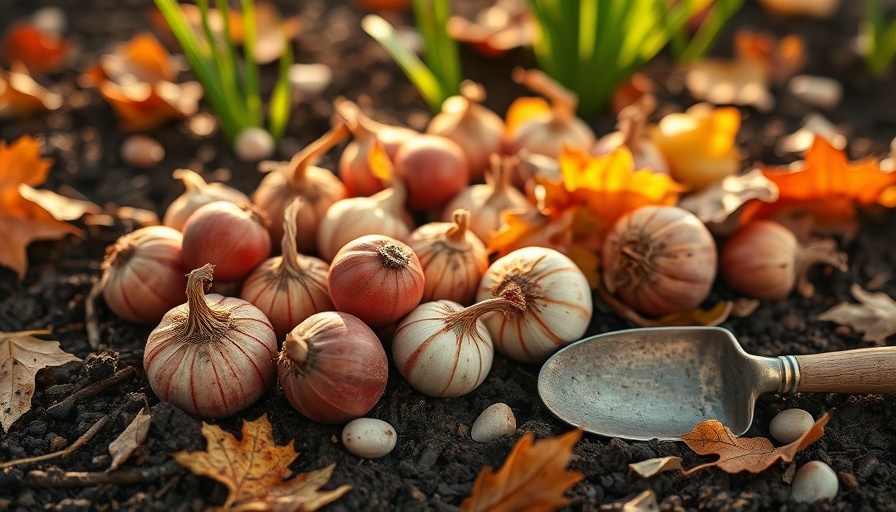
The Beauty of Fall Bulb Planting
As summer fades and autumn colors emerge, the garden presents an ideal opportunity for passionate DIYers and homeowners to prepare their plots for a spectacular spring bloom. Planting fall bulbs such as tulips, daffodils, hyacinths, crocuses, and alliums not only beautifies your outdoor space but also enriches the soil for future gardening plans. With the right preparation, these flowers will reward you with a vibrant display, showcasing your hard work come springtime.
Choosing the Right Location for Bulbs
Location is critical when preparing the ground for bulbs. These plants thrive in areas that receive at least six hours of sunlight daily. Strategically selecting a sunny spot can greatly increase your bulbs' chances for healthy growth. The best locations often include slopes or borders, where you can plant bulbs in clusters to create a natural, eye-catching effect. For those gardening in warmer climates, consider planting where afternoon shade is available to extend the blooming period. Ensuring good drainage prevents diseases related to excess moisture—bulbs prefer well-drained soil, steering clear of standing water.
Ensuring Soil Integrity
Preparing your soil involves more than just choosing a sunny spot. It encompasses clearing away any weeds or debris that might rob your bulbs of essential nutrients. Weeds are fierce competitors, siphoning water, light, and nutrients from the soil that you want your bulbs to access. Take the time to thoroughly clear the area, and consider enriching the soil by mixing in compost or organic matter to enhance its fertility. This careful groundwork lays the foundation for a thriving bulb garden.
Planting Techniques that Make a Difference
When it comes to planting your bulbs, technique matters. A general guideline is to plant bulbs 2-3 times deeper than their height. For instance, if your bulb is 2 inches tall, you should dig at least 4 to 6 inches deep. Make sure to position each bulb with the pointed end facing upward to encourage healthy growth. Planting in drifts rather than in straight lines creates a more pleasing aesthetic, allowing for natural formations as the bulbs begin to multiply over the years. This method ensures that your garden maintains a dynamic look throughout all seasons.
Anticipating Your Bulbs' Needs
Understanding your bulbs’ needs can elevate your gardening game. By knowing the local climate and soil conditions—especially important for Muskegon inhabitants—gardeners can time their planting effectively. Region-specific strategies can help you avoid common pitfalls in bulb care. Climbing plants, arched supports, and custom seating can enhance your gardening experience by making your outdoor space more enjoyable.
Building on Past Seasons
Each season allows for reflection and improvement in your gardening practices. Don't forget to assess your methods after each bloom. Consider creating a planting schedule to ensure you’re maximizing your efforts: remember what worked well and what could be improved for future gardens. Harvesting this knowledge means each spring can outshine the last, making your bulb displays even more impressive with time.
Calling All Garden Enthusiasts!
If you’re ready to transform your outdoor space and prepare for an incredible spring display, get in touch with your local lawn care experts. Your 5-star rated local lawn care, winter plowing & property management company, Norther-LawnCare.com, can provide you with help tailored to turn your garden vision into reality. Don’t wait; make the call to Everett Lucas at 231-450-3414 and kickstart your fall gardening preparations today!
 Add Row
Add Row 
 Add
Add 


Write A Comment